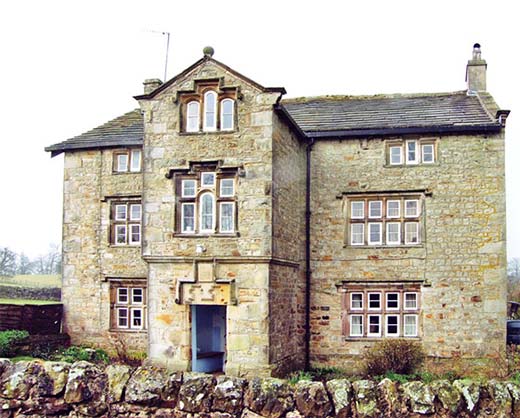History Society Report: Traditional Farmhouses and Buildings in the Lancashire and Yorkshire Pennines
Speaker: Kevin Illingworth
Saturday, 19 November 2016

The traditional buildings of his local area have fascinated Kevin Illingworth for many years and the large audience which gathered at a recent meeting of the Hebden Bridge Local History Society obviously shared his enthusiasm.
Timber frames
Timber framed houses present a beautiful and decorative face to the world, but even more wonderful is the internal construction with the cruck frames that can be seen in the large open halls. Such timber framed halls are more commonly found in Lancashire and Cheshire, but in West Yorkshire, where it became fashionable to encase houses in stone, internal examination often reveals the earlier timber construction.
Porches
It is in the detail that the character of vernacular buildings really emerges. Kevin focused on porches, which were often added to an existing house at a later date. Double height stone porches mirrored the jettied construction of the old timber framed ones, with the upper storey jutting out above the ceiling of the lower. These porches showed off the fashions of the time with decorations such as columns, battlemented tops, finials, elaborately carved ogee doorways, drip mouldings and even dovecote openings. There could be other features too, possible reflecting the superstitions of the age, with small carved balls under the apex of the roof or on the inside of the porch doorway, acting as protective marks. Even more fun are the gargoyle water spouts, with flat, cat-like faces – the practical combining with the decorative. It is clearly particularly rewarding to look up when visiting a historic house.
Turning detective
An interest in vernacular buildings seems to turn you into something of a detective, noting where roof levels have been changed, floors inserted and several centuries of building can be uncovered. Kevin suggested that joining a group such as the Friends of Historic Houses Association or local Vernacular Buildings study groups can often get you access to buildings not normally open to the public. Alternatively you can turn detective and search the photographic library of listed building on the website Images of England.
The next meeting of the Hebden Bridge Local History Society on Wednesday 23rd November will hear Andrew Bibby talk about the Hebden Machinists' strike of one hundred years ago. Meetings are held at the Methodist Church in Hebden Bridge and start at 7.30 pm. Everyone is welcome and more information can be found on the website www.hebdenbridgehistory.org.uk
With thanks to Sheila Graham for this report


